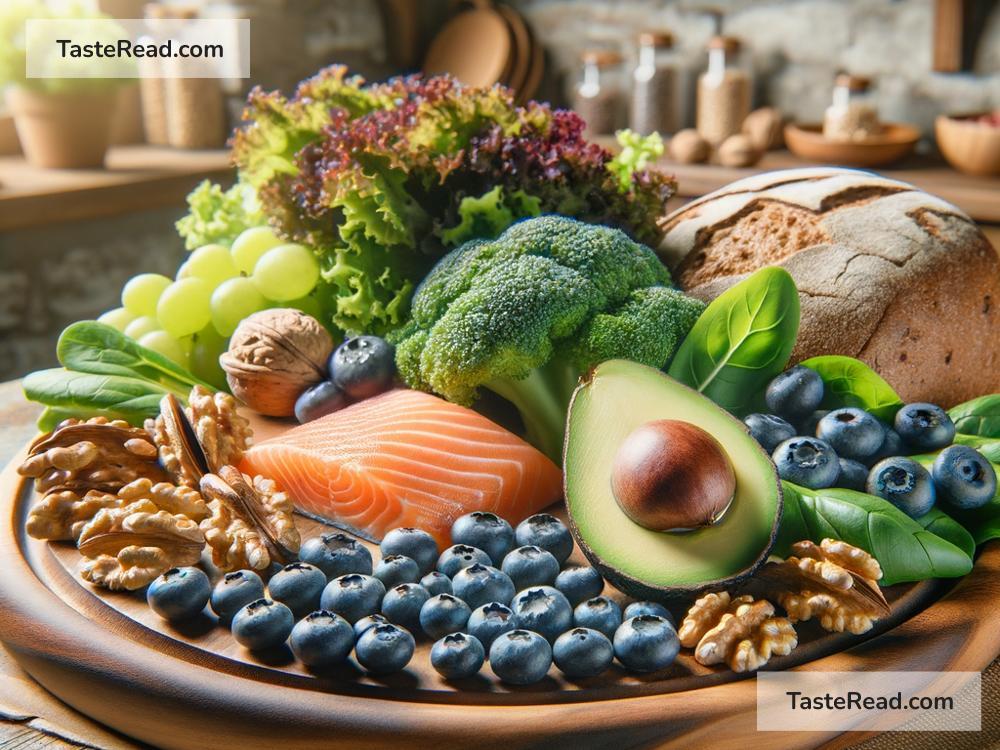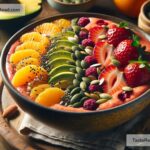Foods That Reduce the Risk of Stroke
Strokes can be sudden and frightening health events that change lives. They happen when blood flow to the brain is disrupted, either by a blockage (ischemic stroke) or by bleeding in the brain (hemorrhagic stroke). While strokes can be unpredictable, there are ways to lower your risk—and one of the most effective measures is eating the right foods. A healthy diet makes a big difference in keeping your heart and blood vessels in good shape, which reduces your chances of having a stroke.
In this article, we’ll talk about foods that help reduce stroke risks in simple terms. These foods are good for your heart, brain, and blood pressure—and they can be easily added to your daily meals.
1. Leafy Greens and Vegetables
Vegetables like spinach, kale, and broccoli are packed with nutrients your body loves. They’re high in vitamins, minerals, and antioxidants that reduce inflammation in your blood vessels. Plus, they’re rich in potassium, a mineral that helps lower high blood pressure, which is one of the biggest risk factors for stroke.
Try adding a handful of spinach to your smoothies, or enjoy a colorful salad with lettuce, tomatoes, and cucumbers. Even frozen vegetables work well if fresh ones aren’t available—just steam them for a quick and healthy side dish.
2. Whole Grains
Whole grains like brown rice, quinoa, oats, and whole-grain bread are fantastic for heart health. They contain fiber, which helps keep your cholesterol levels in check. High cholesterol can lead to narrowing or blockages in blood vessels, increasing stroke risk. Eating whole grains also helps manage blood sugar levels, preventing diabetes—a condition that makes strokes more likely.
For breakfast, try oatmeal with nuts and fruit. Switch your regular white bread for whole-grain bread when making sandwiches or toast. Small swaps like these can make a big difference over time.
3. Fish High in Omega-3
Fatty fish like salmon, mackerel, sardines, and trout are good sources of omega-3 fatty acids. These healthy fats improve circulation and reduce inflammation throughout the body. Omega-3s can also lower triglycerides—fats in your blood that can lead to heart problems and strokes.
If you can, include fish in your meals at least twice a week. Grilling or baking fish is healthier than frying it, and it’s easy to pair with veggies and whole grains for a balanced meal.
4. Nuts and Seeds
A handful of nuts and seeds makes a nutritious snack. Almonds, walnuts, chia seeds, flaxseeds, and sunflower seeds are loaded with healthy fats, fiber, and antioxidants that benefit your heart. Walnuts, in particular, are high in omega-3 fatty acids, while flaxseeds contain compounds that help keep blood pressure in check.
Toss some nuts or seeds into your yogurt, oatmeal, or salads for a crunchy addition packed with health benefits.
5. Fruits Packed with Antioxidants
Fruits like berries, oranges, apples, and bananas are great for reducing stroke risks. Berries—such as strawberries, blueberries, and raspberries—are full of antioxidants that protect your blood vessels from damage and inflammation. Citrus fruits like oranges are rich in vitamin C, which keeps your arteries healthy.
Bananas, meanwhile, are loaded with potassium, which lowers blood pressure. Eating a variety of fruits regularly gives your body the nutrients it needs to stay strong and stroke-free.
6. Healthy Fats: Olive Oil and Avocado
Not all fats are bad. Healthy fats, like those found in olive oil and avocados, can reduce harmful cholesterol (LDL) and increase good cholesterol (HDL). This helps keep your blood vessels clear and reduces stroke risks.
Drizzle olive oil on your salads or use it for cooking instead of butter or margarine. For a quick snack, mash avocados onto whole-grain toast or slice them into your salads.
7. Legumes: Beans and Lentils
Legumes like black beans, lentils, chickpeas, and kidney beans are rich in fiber, protein, and nutrients that support heart health. They’re great for lowering bad cholesterol and stabilizing blood sugar levels. Plus, they’re affordable and versatile—you can easily add them to soups, stews, salads, or burritos.
If you’re new to legumes, start with a simple lentil soup or toss chickpeas into your green salad for an extra protein boost.
8. Dark Chocolate (In Moderation!)
Here’s a treat you don’t have to feel guilty about: dark chocolate. If it’s 70% cocoa or higher, dark chocolate contains antioxidants that benefit your heart and may lower your risk of stroke. But moderation is key—too much chocolate can add unnecessary sugar and calories. A small square or two as an occasional snack is enough.
9. Green Tea
Green tea is an excellent drink choice for stroke prevention. It’s high in antioxidants called catechins, which protect your blood vessels and improve circulation. Drinking green tea regularly may also help lower blood pressure and cholesterol, which are key factors in stroke risk.
Swap out sugary drinks for a warm cup of green tea or enjoy it cold over ice during warmer months.
What to Avoid
As important as eating the right foods is, it’s also necessary to limit harmful ones. Avoid processed foods high in salt, trans fats, and sugar—they can raise blood pressure and damage blood vessels. Fast food, sugary drinks, and processed snacks should only be consumed sparingly.
Final Thoughts
The food you eat has a powerful impact on your health, including your risk of stroke. Adding leafy greens, fruits, whole grains, fatty fish, healthy fats, beans, and nuts to your meals is a simple yet effective way to protect yourself. The key is consistency—these foods don’t work overnight but can make a big difference over weeks, months, and years.
Remember, healthy eating doesn’t mean you have to give up delicious meals. With a little creativity, you can enjoy a diet that’s both tasty and beneficial to your health. Start small, and incorporate one or two of these stroke-fighting foods into your meals each day. Your brain—and heart—will thank you!


